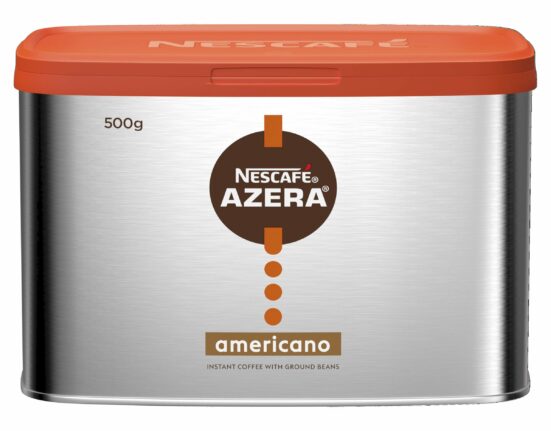In both domestic and professional realms, espresso machines have gained remarkable traction in recent years, transcending mere appliances to become symbols of culinary craftsmanship. The Aicook Espresso Machine, known for its 3.5 Bar pressure system, epitomizes this evolution. This article delves into the nuances of the Aicook espresso and coffee maker, exploring its design, functionality, and the cultural implications of its usage in a contemporary context.
The inception of the Aicook brand is a notable event in the landscape of home coffee brewing technology. Marketed primarily as a household appliance, the Aicook Espresso Machine provides a user-friendly approach to one of the more intricate methods of coffee preparation. Yet, to further dissect the importance of such machines, it is crucial to understand their historical roots and current significance in both culinary and social domains.
The journey of coffee as a popular beverage began centuries ago, gaining momentum in Europe during the 17th century. In many ways, the rise of espresso culture can be viewed as a reaction to the accelerating pace of modern life, making the availability of quality coffee an essential factor in daily routines. The Aicook Espresso Machine, therefore, serves not only as an instrument for brewing but as a catalyst in redefining coffee drinking norms.
Unpacking the intricate design of the Aicook Espresso Machine unveils a blend of aesthetics and functionality. Featuring a sleek exterior and intuitive interface, it invites users to engage with it on multiple levels. A pivotal aspect of this design is its compactness, ideal for kitchen spaces that grapple with limitations in area without compromising on quality. The color palette and finish are curated to meld seamlessly with a variety of domestic decors, thus provably enhancing the overall kitchen environment.
Functional Dynamics of the Aicook Espresso Machine
At the heart of the Aicook Espresso Machine lies its operational simplicity coupled with advanced brewing mechanics. The machine boasts a remarkable 3.5 Bar pressure system, which is integral to extracting the rich, complex flavors inherent to espresso. This pressure level is somewhat paradoxical; while it appears modest in comparison to professional espresso systems that often exceed 9 Bars, it is nonetheless crafted to yield commendably robust and flavorful brews.
The functionality of the Aicook machine accommodates varying tastes and preferences; users can explore an array of coffee styles ranging from traditional espresso shots to milk-based drinks like lattes and cappuccinos. The accompanying frothing wand elevates this experience, allowing for the creation of velvety microfoam, which is particularly coveted in specialty coffee culture. Consequently, the machine not only democratizes access to quality coffee but also invites users to experiment with their own creations, fostering a deeper appreciation for the craft.
Yet, one cannot overlook the practical considerations associated with the Aicook Espresso Machine. The ease of cleaning and maintenance is a noteworthy feature. The water reservoir is easily removable, and the machine’s components can be disassembled, effectively reducing the friction between regular usage and upkeep. This aspect is particularly beneficial for novices who might feel daunted by the demands of espresso preparation, thus making the experience less intimidating.
Cultural Implications of Home Brewing Technologies
The rise of machines like the Aicook Espresso Maker cannot be divorced from broader socio-cultural trends. As gourmet coffee becomes increasingly embedded in daily life, the act of brewing espresso at home is transformed from a simple task into a ritual laden with meaning. It represents a fusion of tradition with modernity, creating a narrative that celebrates individual agency over the commodified experience of café culture.
This shift in consumer behavior can be analyzed through the lens of empowerment—by choosing to brew at home, individuals reclaim aspects of their culinary experiences previously relegated to consumer spaces. Social media platforms, particularly Instagram, have amplified this trend, as users not only share their final coffee creations but also the processes involved in crafting them. The Aicook Espresso Machine finds itself at the intersection of these narratives, enabling users to engage in coffee culture in intimate, personal ways.
Moreover, the machine has potential implications for sustainability within the coffee industry. As coffee lovers become more discerning about sourcing and production methods, the accessibility of home brewing empowers consumers to make more thoughtful choices about the beans they purchase and use. The ability to control brewing variables can enhance appreciation for single-origin coffees and various roasts, likely leading to a demand for ethically sourced coffee beans. This promotes a sense of responsibility towards both environmental and social dimensions of coffee production, facilitating conversations about sustainability and ethical consumption.
The Future of Home Espresso Systems
As technological advancements continue to influence our daily routines, the future of home espresso systems seems bright and innovative. The versatility of the Aicook Espresso Machine provides a foundational framework upon which further enhancements could be realized. Integration with smart home technologies, such as app connectivity for programmable settings or automatic grinding, represents just the tip of the iceberg.
This forthcoming evolution, however, beckons the coffee aficionado to grapple with the ethical dilemmas that accompany advancements in consumer technology. As the accessibility of espresso preparation grows, questions about the environmental impact of production and distribution become unavoidable. It is imperative to remain vigilant about the wider implications of such conveniences as we step further into the future of coffee brewing.
In closing, the Aicook Espresso Machine is far more than an appliance; it is a tangible representation of the intertwined landscapes of individual empowerment, culinary exploration, and cultural evolution. The confluence of factors, from user-friendliness to aesthetic appeal, imbues the experience of home coffee brewing with significance and nuance. Those who embrace this shift are not merely consumers but participants in a rich dialogue that celebrates coffee as both art and ritual. As such, engaging with the Aicook Espresso Machine presents a direct challenge: to not just brew coffee, but to explore and deepen one’s connection to this time-honored beverage and the community surrounding it.








Leave feedback about this